Spring is here, and planting is underway in bee gardens throughout California. And planting, especially if you're creating a new garden, means you are thinking about design. In this series of posts I will cover various aspects of garden design -- such as color, texture, shape, and size -- from the perspective of what bees need. Based on research, this information should provide a solid foundation for a successful bee garden.
This post will focus on color. An understanding of color theory is helpful in creating an aesthetically pleasing garden for us, but color is also relevant for bees. All color wheel screen shots shown here are from the Adobe web page.
1. Complementary colors. Colors opposite each other on the color wheel are complementary; this is one of the easiest ways to select colors. Using opposite colors together makes each color appear more vibrant.
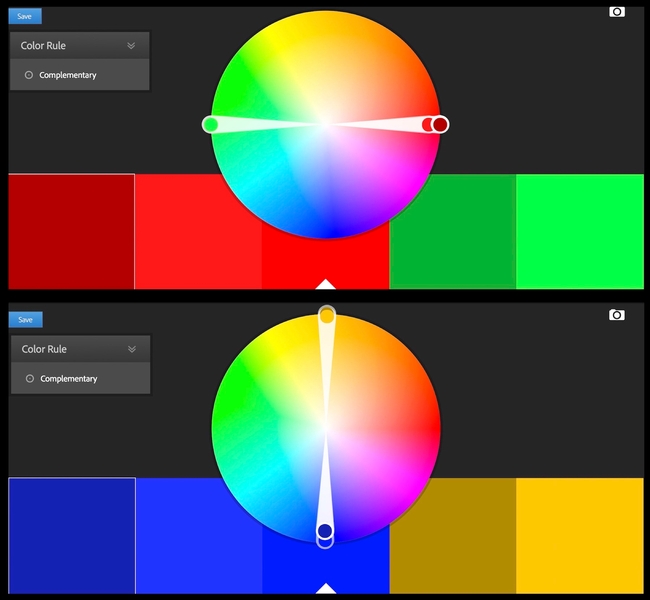
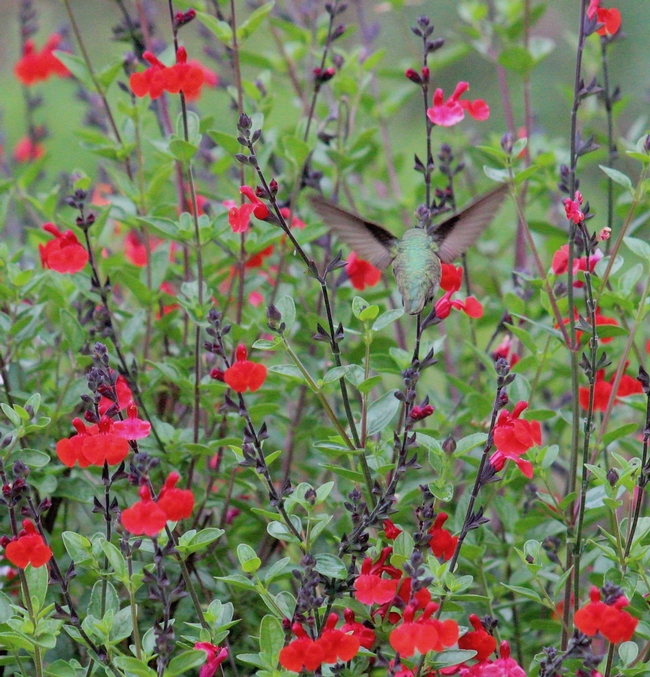
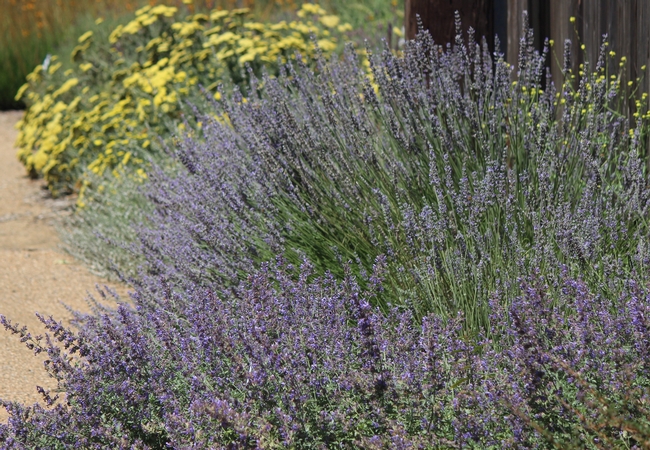
2. Analogous colors. Colors adjacent to each other on the color wheel are analogous; using these colors can be a bit trickier, especially with hot colors like oranges and reds. One way to combine these effectively is to mix in white, as is done here with white gaura in this planting of the analogous colors pink (echinacea) and purple (tall verbena).
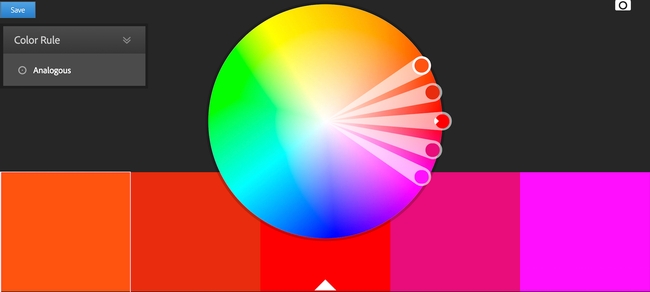
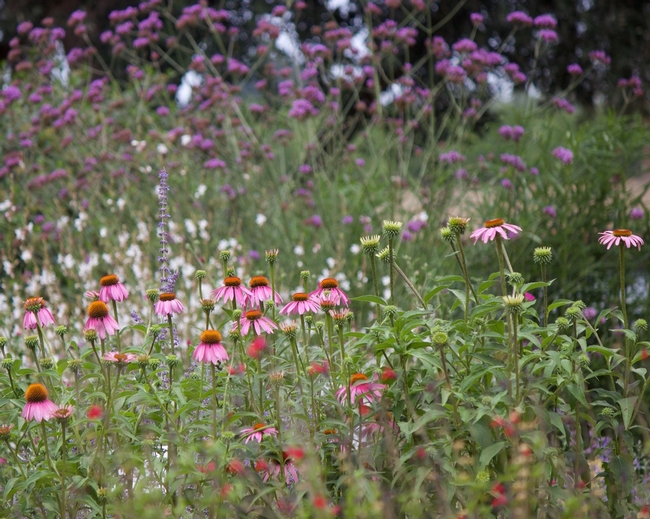
3. Shades of one color. This is the easiest combination to pull off. Cool colors (blues and purples) tend to create a calming effect and make the garden appear larger, while warm colors (reds and yellows) create energy and make the garden appear smaller. Here is an example of shades of a cool color (purple) used in the Haven:
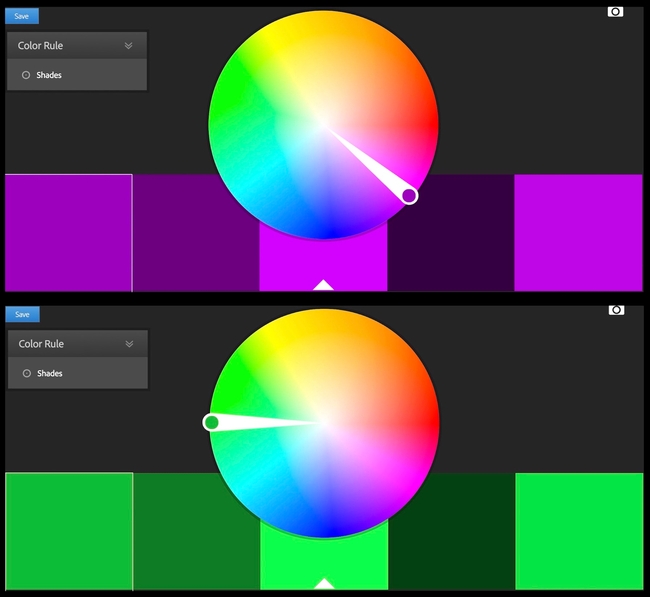
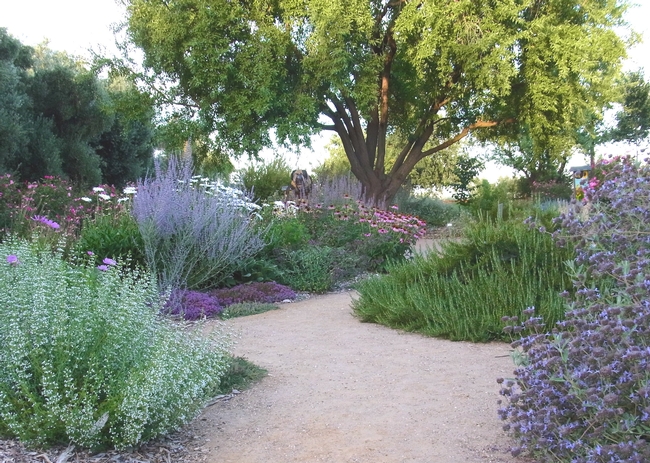
So how do we meld this with bee biology? Here are some pointers:
1. Bees see color differently than we do. They don't see red at all, and see purple very well....there's a reason we have so many purple flowers in the Haven. Here's an example: the first photo shows a flannel bush flower in daylight, while the second shows it under ultraviolet (UV) light, which is the light spectrum where bees see. The 'invisible' nectar (to us) is a bright blue beacon to bees under UV light.
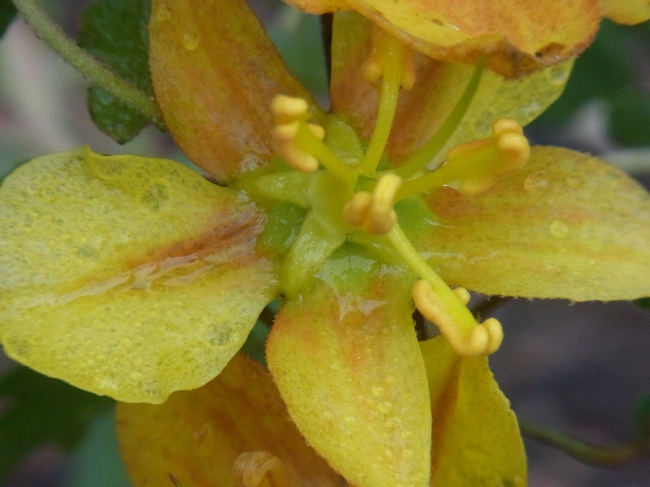
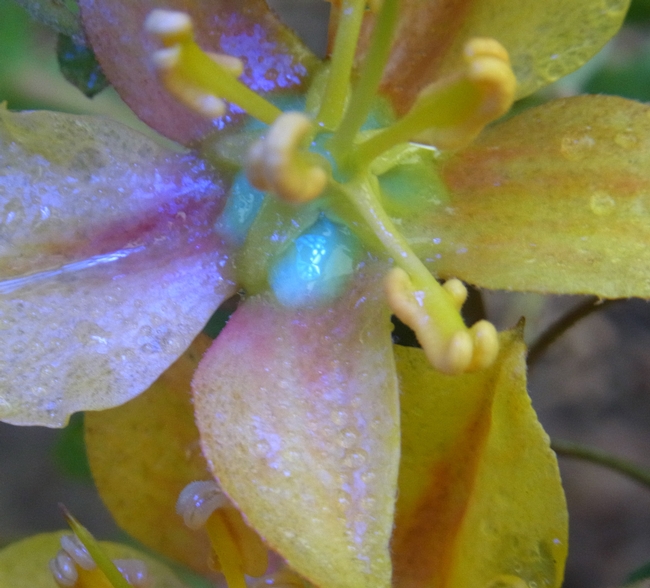
But, you might be thinking, I see bees on red flowers all the time! Well bees can use more than color to find a flower, which brings us to scent....I'll discuss this in a future post.
2. Does color pattern in the garden matter to bees? One study (Proc. R. Soc. London B. 2003. 270: 569-575) found that honey bee foraging distance was longer in simple landscapes; this makes sense because honey bees do best with a varied diet and need to travel further to find a mix of flowers in a simple landscape. Conversely, waggle dance activity was greater in complex landscapes because the patches of plants were more variable -- high quality and low quality plants were mixed together. So it's also important to ensure a good mix of high-quality bee plants in appropriately-sized patches.
3. Another aspect of flower color often not considered is patterns on the flowers themselves. Called nectar guides, these serve to guide bees into the nectary. Of course they pick up and deposit pollen as they do this, thereby pollinating the flower.
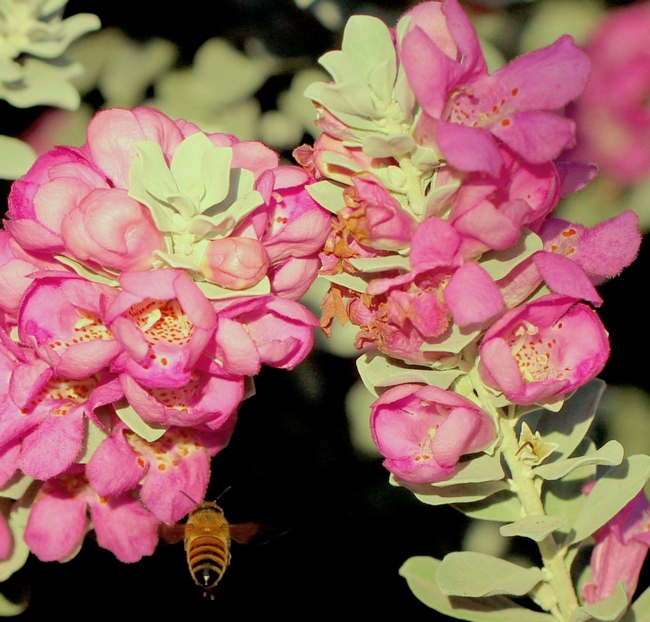
For lots more detail about how bees see, check out this article. My next post will cover shape, size, scent, and texture. I'll finish with suggested plant lists and planting plans. Here's to your successful bee garden!